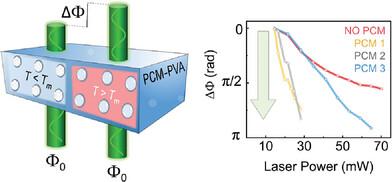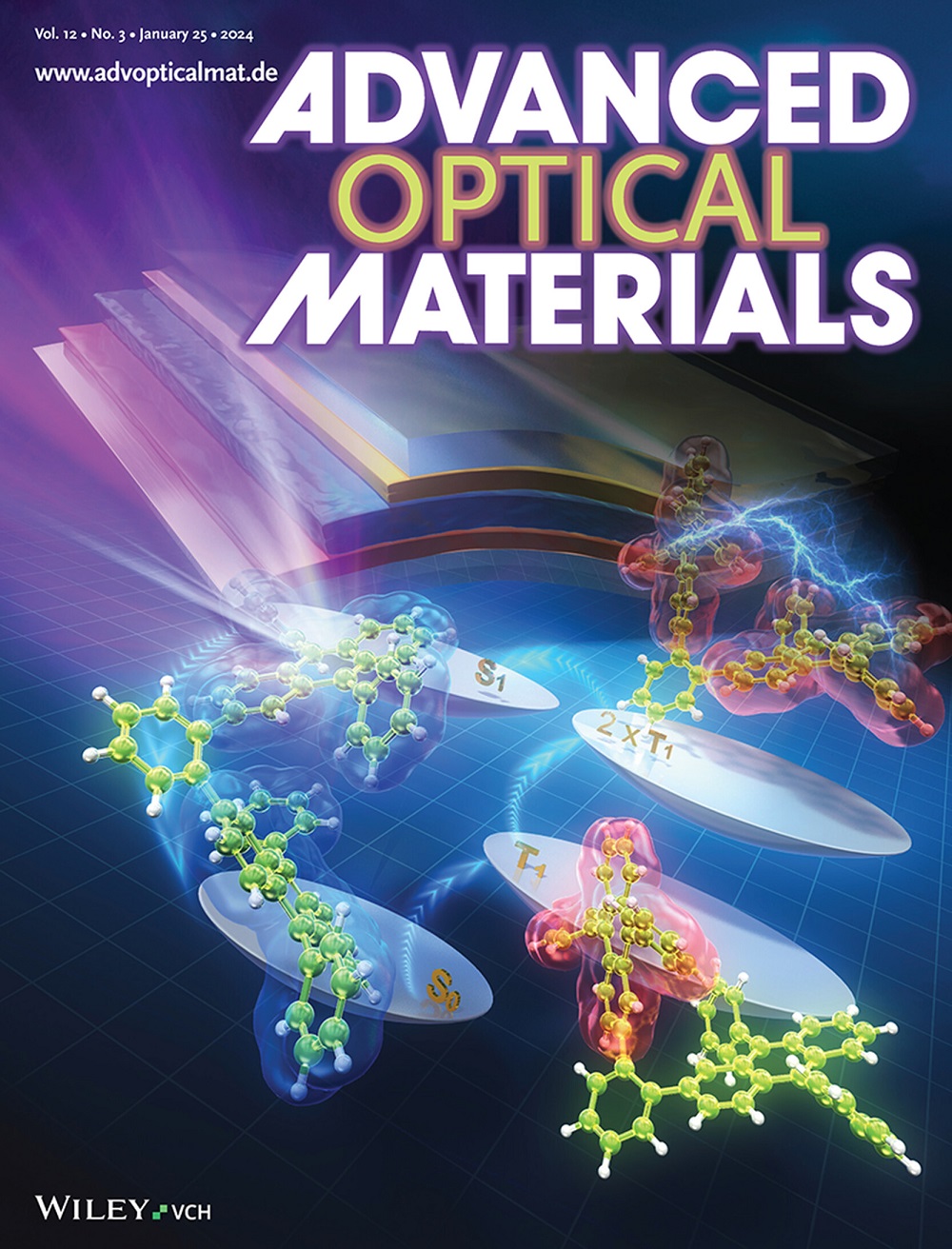利用透明石蜡基相变材料进行光相调制
IF 8
2区 材料科学
Q1 MATERIALS SCIENCE, MULTIDISCIPLINARY
引用次数: 0
摘要
相变材料(PCM)为光学做出了巨大贡献,其应用范围从可重写存储器到智能窗户不等。这要归功于 PCM 在热诱导相变时光学特性的变化。然而,这种行为伴随着一个(或多个)相位光学透明度的丧失,对基于传输的功能造成了很大的限制。本文通过生产基于 PCM 的复合材料来解决这一难题,这种复合材料在相变过程中仍能在可见光谱中保持透明。这种创新材料的基石是使用 30 纳米大小的石蜡纳米颗粒作为 PCM,无论石蜡的相位如何,都能最大限度地减少聚合物主基质内的散射。为了证明这种方法的潜力,研究表明薄复合材料层可以利用温度调节入射可见光的相位,实现最大相移达 π 弧度的均匀相位曲线。值得注意的是,与聚二甲基硅氧烷等热光学参考材料相比,所研究的复合材料在相同输入功率下的相位变化最多可大三倍。这些发现使石蜡基复合材料成为各种热光学应用(包括波前整形和像差校正)的理想材料,有望对各种光学技术产生重大影响。本文章由计算机程序翻译,如有差异,请以英文原文为准。

Light Phase Modulation with Transparent Paraffin‐Based Phase Change Materials
Phase change materials (PCM) have greatly contributed to optics with applications ranging from rewritable memories to smart windows. This is possible thanks to the variation in optical properties that PCMs undergo upon thermally‐induced phase change. However, this behavior is accompanied by a loss of optical transparency in one (or more) of their phases, posing a major limitation for transmission‐based functionalities. Here this challenge is addressed by producing PCM‐based composites that remain transparent in the visible spectrum during their phase transition. The cornerstone of this innovative material is the use of 30 nm‐in‐size nanoparticles of paraffin as PCMs, which minimizes the scattering within the polymer host matrix regardless of the paraffin's phase. To demonstrate the potential of this approach, it is shown that thin composite layers can modulate the phase of the incident visible light using temperature, achieving uniform phase profiles with maximum phase shifts up to π radians. Notably, the composites studied exhibit up to threefold larger phase changes for the same input power over reference thermo‐optical materials like polydimethylsiloxane. These findings position paraffin‐based composites as promising materials for various thermo‐optical applications, including wavefront shaping and aberration correction, with the potential to significantly impact a variety of optical technologies.
求助全文
通过发布文献求助,成功后即可免费获取论文全文。
去求助
来源期刊

Advanced Optical Materials
MATERIALS SCIENCE, MULTIDISCIPLINARY-OPTICS
CiteScore
13.70
自引率
6.70%
发文量
883
审稿时长
1.5 months
期刊介绍:
Advanced Optical Materials, part of the esteemed Advanced portfolio, is a unique materials science journal concentrating on all facets of light-matter interactions. For over a decade, it has been the preferred optical materials journal for significant discoveries in photonics, plasmonics, metamaterials, and more. The Advanced portfolio from Wiley is a collection of globally respected, high-impact journals that disseminate the best science from established and emerging researchers, aiding them in fulfilling their mission and amplifying the reach of their scientific discoveries.
 求助内容:
求助内容: 应助结果提醒方式:
应助结果提醒方式:


